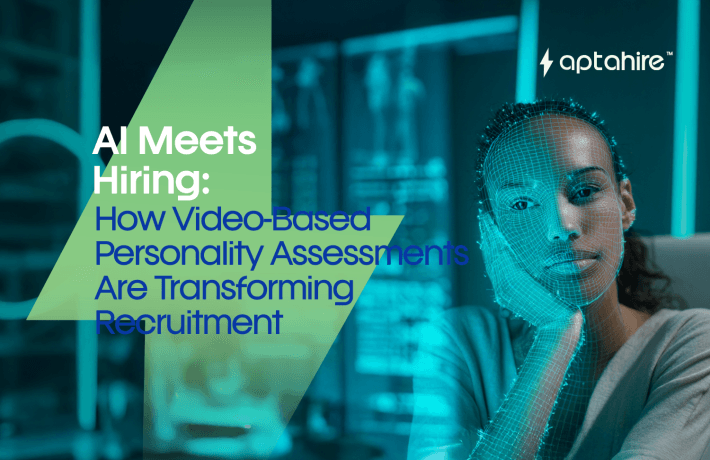Deep Learning for Background Detection: How AI Detects External Influence During Video Interviews

Imagine this: You’re conducting a virtual interview. The candidate seems confident, responds quickly, and gives all the right answers. But what if, behind the scenes, someone is whispering suggestions? Or maybe they’ve pasted cheat notes on the wall behind the screen. In a virtual world, it’s harder to tell.
That’s where AI-powered background detection, driven by deep learning, steps in.
Let’s dive into how this cutting-edge technology works and why it’s a game-changer for fair, transparent, and efficient hiring in today’s remote-first world.
First, What Is Background Detection in Virtual Interviews?
Background detection doesn’t mean identifying your bookshelf or your dog walking behind you (though that happens too!). In hiring, background detection is about using AI to analyze the video feed of a candidate during an interview, identifying:
- Suspicious movements or people in the background
- Unusual lighting changes
- Pop-ups, texts, or screens reflected in glasses or eyes
- Audio anomalies like whispers or delayed speech patterns
It helps detect external influences that might affect the authenticity of the candidate’s performance.
Enter Deep Learning: The Brain Behind It All
Deep learning is a subset of machine learning that mimics the way humans learn, but with the power of neural networks. In this context, AI models are trained on thousands of real and simulated interview scenarios to recognize:
- Background noise patterns
- Eye movement inconsistencies
- Changes in frame lighting or background objects
- Sudden shifts in posture or gaze direction
Over time, the model learns to differentiate between genuine and manipulated behaviors.
Example? If a candidate keeps glancing off-screen in a pattern that suggests they’re reading prompts, the system flags it. If someone walks into the background and hands over a note, that’s flagged too.
Why Is This Important in AI Hiring?
Let’s face it, cheating isn’t just for exams anymore. In the era of remote interviews, candidates can be:
- Fed answers via a second screen
- Using earphones hidden beneath long hair
- Having another person help off-camera
AI-backed background detection levels the playing field by ensuring that every candidate is assessed fairly, based on merit, not external help.
How Does It Work in Practice?
- Real-Time Monitoring
During the interview, the AI continuously analyzes the background, body language, and sound.
- Pattern Recognition
It recognizes deviations from “normal” behavior, like unnatural eye movements, quick shifts in lighting, or off-camera sounds.
- Flagging Suspicious Activity
If something seems off, it’s either flagged immediately or highlighted in the post-interview report.
- Post-Interview Analysis
Recruiters receive a breakdown showing any inconsistencies in behavior, potential distractions, or signs of external influence.
The Ethical Balance
AI isn’t about playing the gotcha game. It’s about creating a secure, honest, and equal environment for every applicant.
By detecting external influence:
- Recruiters hire with more confidence
- Genuine candidates are protected from unfair competition
- The overall hiring process becomes more robust and trustworthy
That said, transparency is key. Candidates should always be informed that AI analysis is part of the process, building trust, not fear.
Industries Using This Already
- Tech Startups ensuring fair coding tests
- Healthcare organizations where trust is non-negotiable
- Finance and Banking where regulatory compliance is crucial
- Remote-First Enterprises hiring across time zones and continents
The Future of AI in Hiring
The power of AI and deep learning in hiring isn’t about replacing humans, it’s about enhancing human decision-making. By giving recruiters intelligent tools to detect dishonesty, they can focus on what really matters: cultural fit, skill alignment, and long-term potential.
Final Thoughts
Virtual interviews are here to stay. So are smart candidates trying to bend the rules.
But with deep learning-powered background detection, integrity takes the front seat.
Whether you’re a recruiter or a candidate, it’s clear that the future of hiring is transparent, fair, and AI-assisted.
So the next time someone tries to whisper interview answers off-screen, remember: the AI is watching, and it’s smarter than you think.
FAQs
1. What is background detection in AI-powered interviews?
Background detection refers to the AI’s ability to analyze and interpret the surroundings during a video interview, including the environment, background visuals, and any irregular movements, to ensure the integrity of the interview process.
2. How does deep learning help with background detection?
Deep learning models are trained on massive datasets of images and video feeds. This enables them to identify inconsistencies like multiple people in the background, changing surroundings, or unusual visual patterns that could indicate assistance or tampering during the interview.
3. Can AI detect if someone else is present off-screen during a video interview?
Yes. Advanced AI models can detect shadows, eye movement directions, unusual audio cues, and partial visibility of another person to flag the possible presence of someone off-screen helping the candidate.
4. Why is background detection important in virtual hiring?
With the rise of remote interviews, ensuring that a candidate is not receiving external help is essential for fair evaluation. Background detection maintains authenticity and trust in the hiring process.
5. What kind of external influences can AI identify through background analysis?
AI can detect:
- Whispering or additional voices
- Shared screens or teleprompters
- Shadowy figures or reflections
- Pattern inconsistencies (like quick switching of backgrounds or cuts in footage)
- Sudden changes in lighting or environment
6. Is background detection AI intrusive or a privacy risk?
No. The technology is designed to analyze patterns and ensure fairness, not to invade privacy. Employers must also comply with data protection laws and inform candidates about AI usage upfront.
7. How accurate is AI background detection?
When trained properly, deep learning models can achieve high accuracy, often identifying anomalies in real-time with over 90% precision, especially when integrated with other AI tools like voice and face analysis.
8. Can candidates bypass background detection tools?
While some may try, deep learning models continuously improve and detect even subtle signs of manipulation. Attempts to trick the system, like virtual backgrounds or hidden cues, are becoming easier for AI to catch.
9. How do companies benefit from using background detection AI?
Employers save time and resources by ensuring that every interview is legitimate, fair, and transparent, minimizing the risk of hiring based on dishonest or manipulated performances.
10. Should candidates be worried about AI watching their backgrounds?
Not at all. If you’re genuine and focused, there’s nothing to worry about. Background detection is only there to flag unusual behavior that suggests unfair advantage, not to judge your home setup or surroundings.



